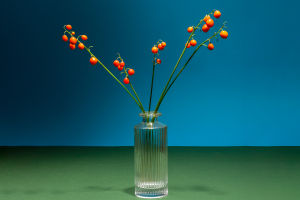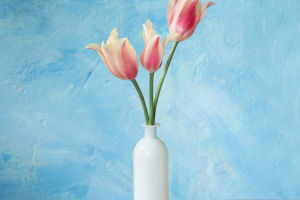Flower arrangement, an art form that originates from nature yet transcends it, combines the life beauty of flowers, the rhythm of colors, and the skill of composition, infusing spaces with endless vitality and artistic atmosphere.
This article will delve into the primary forms of flower arrangement, revealing its aesthetic principles and creative techniques, and guiding readers to appreciate the diverse styles and profound meanings of this art.
As a form of spatial decoration, flower arrangement utilizes fresh flowers, branches, leaves, fruits, and other plant materials as its medium. Through careful design and clever combinations, it creates floral works of varying forms and deep meanings.
Flower arrangement is not only about visual aesthetics but also embodies Eastern philosophical concepts, such as harmony with nature, coexistence, and the cyclical nature of the seasons, making it an important component of the aesthetics of life.
In flower arrangement, based on the characteristics of form and aesthetic philosophy, five main types can be identified: vertical, inclined, drooping, horizontal, and free style.
1. Vertical Arrangement: Vertical arrangements emphasize vertical lines, highlighting a sense of upward growth and vitality. The materials typically extend from the center of the vase upward, forming a stable triangular or tower-like structure. Vertical arrangements are simple and direct, possessing a strong visual impact. They are often used in celebrations and ceremonies, symbolizing a spirit of positivity and aspiration.
2. Inclined Arrangement: Inclined arrangements break away from the orderly structure of vertical arrangements, with the main branches slanting at an angle to create dynamic balance and rhythmic beauty. This form is lively and variable, often using a staggered layout to reflect the growth patterns and grace of nature. Inclined arrangements are suitable for everyday home decor, and dining areas, and create a relaxed and cheerful atmosphere.
3. Drooping Arrangement: Drooping arrangements emphasize downward lines, creating an elegant and tranquil ambiance. The materials naturally cascade from the edge of the vase, forming waterfall-like or flowing structures. This style is ideal for tall spaces or windows, effectively stretching the visual space and adding a sense of ethereality and lightness. It is often used to evoke a Zen-like, meditative, or romantic atmosphere.
4. Horizontal Arrangement: Horizontal arrangements focus on horizontal expansion and an open perspective. The materials are evenly distributed across the surface of the vase, forming a flat or hemispherical structure. This style features relaxed lines and rich colors, suitable for low spaces such as tables and wall hangings. It is often used for banquet centerpieces and festive decorations, creating a lively and joyful environment.
5. Free Style: Free style arrangements are not bound by fixed rules, focusing on emotional expression and individuality. The layout of materials is free and spontaneous, with forms, lines, and colors pursuing natural and dynamic beauty. Free style encourages creators to unleash their imagination, incorporating modern artistic concepts to produce innovative and personalized works suitable for various modern art spaces and personalized decoration needs.
With the deepening of globalization and cultural exchange, flower arrangement is showing a trend of diverse integration and innovative development. Modern flower arrangement not only inherits traditional essence but also absorbs Western floral concepts, integrating new materials and technologies, and continuously expanding forms and meanings.
The rising awareness of environmental protection has led more floral artists to adopt sustainable materials like preserved flowers, dried flowers, and artificial flowers, as well as green creative methods such as recycled vases and ecological floral designs. The application of digital and virtual reality technologies opens new avenues for the display and interaction of flower arrangement art.
In summary, flower arrangement showcases the natural beauty of flowers and human creativity through its primary forms: vertical, inclined, drooping, horizontal, and free style. While adhering to traditional aesthetic principles, flower arrangement is embracing the challenges and opportunities of the new era with an open and inclusive attitude, injecting continuous artistic vitality and innovative inspiration into people's living spaces.


